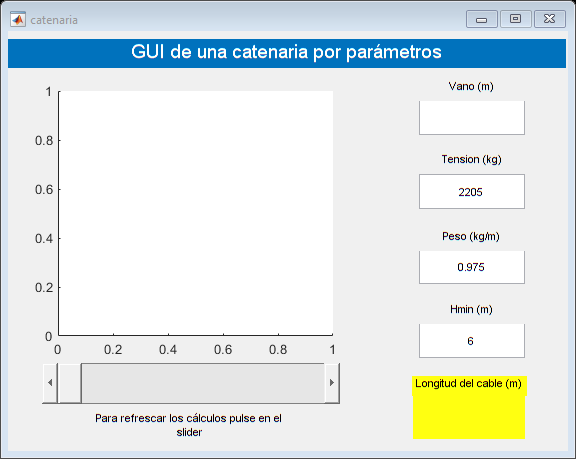Contents
Ejercicio 1
Una curva de tipo param�trica muy utilizada en CAD es la de B�zier. Una curva de B�zier de grado n se define en t�rminos de los polinomios de Bernstein Funciones empleadas: function c=combina(n,i) c=factr(n)/(factr(i)*factr(n-i)); end
function f=factr(n) if n==0 f=1; else f=n*factr(n-1); end
end t=linspace(0,1,20); n=3; for i=0:n b=bernstein(n,i,t); hold on;grid on plot(t,b) end legend('b0','b1','b2','b3') title('Gr�fica polinomio Bernstein: n=3') function b=bernstein(n,i,t) b=combina(n,i)*t.^i.*(1-t).^(n-i); end
t=linspace(0,1,100); v=[1, 2, 4, 4.6;1, 3, -1, 1.5]; plot(v(1,:),v(2,:),'-o') n=size(v); n=n(2); s=size(t); x=zeros(n,s(2));y=zeros(n,s(2)); for i=1:n x(i,:)=bernstein(n-1,i-1,t)*v(1,i); y(i,:)=bernstein(n-1,i-1,t)*v(2,i); end a=sum(x);b=sum(y); hold on plot(a,b)
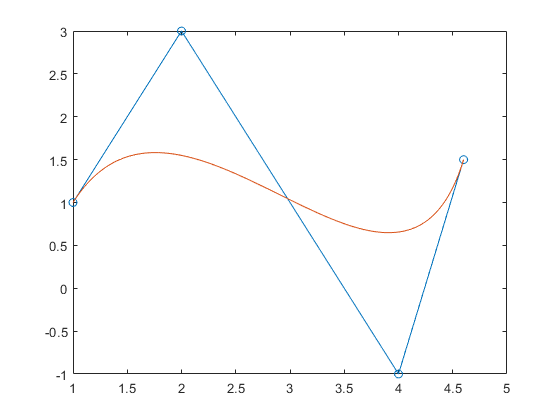
An�lisis de la velocidad del viento
%Histograma datos viento datos_viento=xlsread('sotaventogaliciaanual.xlsx'); intervalos=0:1:25; figure; hist(datos_viento,intervalos); title('Histograma datos viento'); xlabel('Velocidad (m/s)'); ylabel('Frecuencia'); hold off; %Ajuste a la funcion Weibull velocidad=xlsread('sotaventogaliciaanual.xlsx'); %interpolar si es necesario if any(isnan(velocidad)) %si hay alg�n NaN x=1:length(velocidad); i=find(~isnan(velocidad)); velocidad=interp1(x(i),velocidad(i),x); end %histograma x=0.5:1:max(velocidad); horas=hist(velocidad,x); %convierte a frecuencias y ajusta a la funci�n de Weibull frec=horas/sum(horas); f=@(a,x) (a(1)/a(2))*((x/a(2)).^(a(1)-1)).*exp(-(x/a(2)).^a(1)); a0=[2 8]; %valor inicial de los par�metros af=nlinfit(x,frec,f,a0); %diagrama de frecuencias figure; bar(x,frec,'c'); hold on; %representa la curva de ajuste x=linspace(0,max(velocidad),100); y=f(af,x); plot(x,y,'r') title('Ajuste a la funci�n Weibull') xlabel('Velocidad (m/s)') ylabel('Frecuencia') hold off %APARTADO C %Interpolar la curva de potencia del generador Pr=1300; x0=3.0;xr=20;x1=25; %datos de la curva de potencia potencia=xlsread('sotavento_curva potencia.xlsx','B2:B27'); x=0:1:25; pot=potencia(x>=x0 & x<=xr); x=x0:1:xr; figure; plot(x,pot,'ro','markersize',3,'markerfacecolor','r') title('Ajuste de la curva de potencia de un generador'); axis([0 22 0 1400]); xlabel('Velocidad (m/s)'); ylabel('Potencia (MW)'); grid on; hold on; %ajuste p=polyfit(x,pot',3); %ajuste a un polinomio de tercer grado yp=polyval(p,x); plot(x,yp,'k') hold off %c�lculo de la potencia media k=2.3849; c=6.0208; %Par�metro de wwibull calculados antes f=@(x) (k/c)*((x/c).^(k-1)).*exp(-(x/c).^k); %funci�n de Weibull h=@(x) f(x).*polyval(p,x); power=quad(h,x0,xr)+Pr*quad(f,xr,x1); fprintf('La potencia media (MW) es: %3.1f\n',power) clear all
La potencia media (MW) es: 203.4
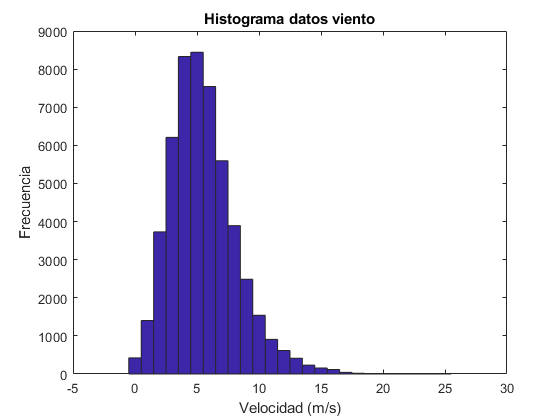
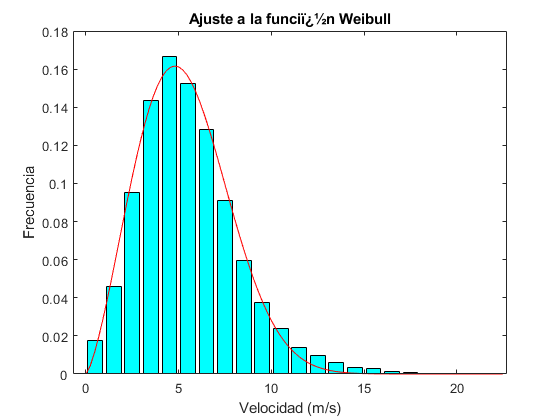

Movimiento muelle
[t1, xx1]=ode45(@muelle, [0,40], [1,0],[ ], 5); plot(t1,xx1(:,1)) hold on [t2, xx2]=ode45(@muelle, [0,40], [1,0],[ ], 40); plot(t2,xx2(:,1)) grid on; [t3, xx3]=ode45(@muelle, [0,40], [1,0],[ ], 200); plot(t3,xx3(:,1)) xlabel('Tiempo (s)'); ylabel('x (m)'); title('x(t) para distintos c (coef. amortiguamiento)'); legend('c=5','c=40','c=200'); % funcion muelle % function x=muelle(t,x,c) % x=[x(2); (-c*x(2)-20*x(1))/20]; % end
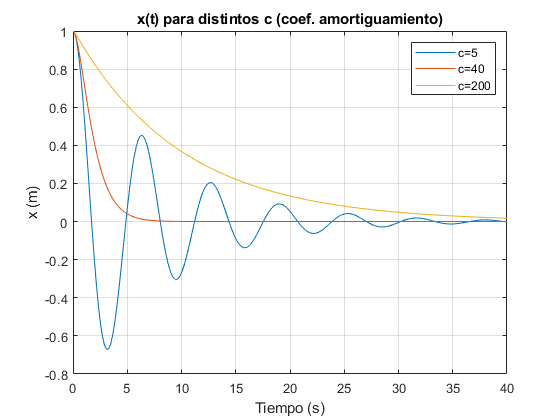
catenaria
catenaria
